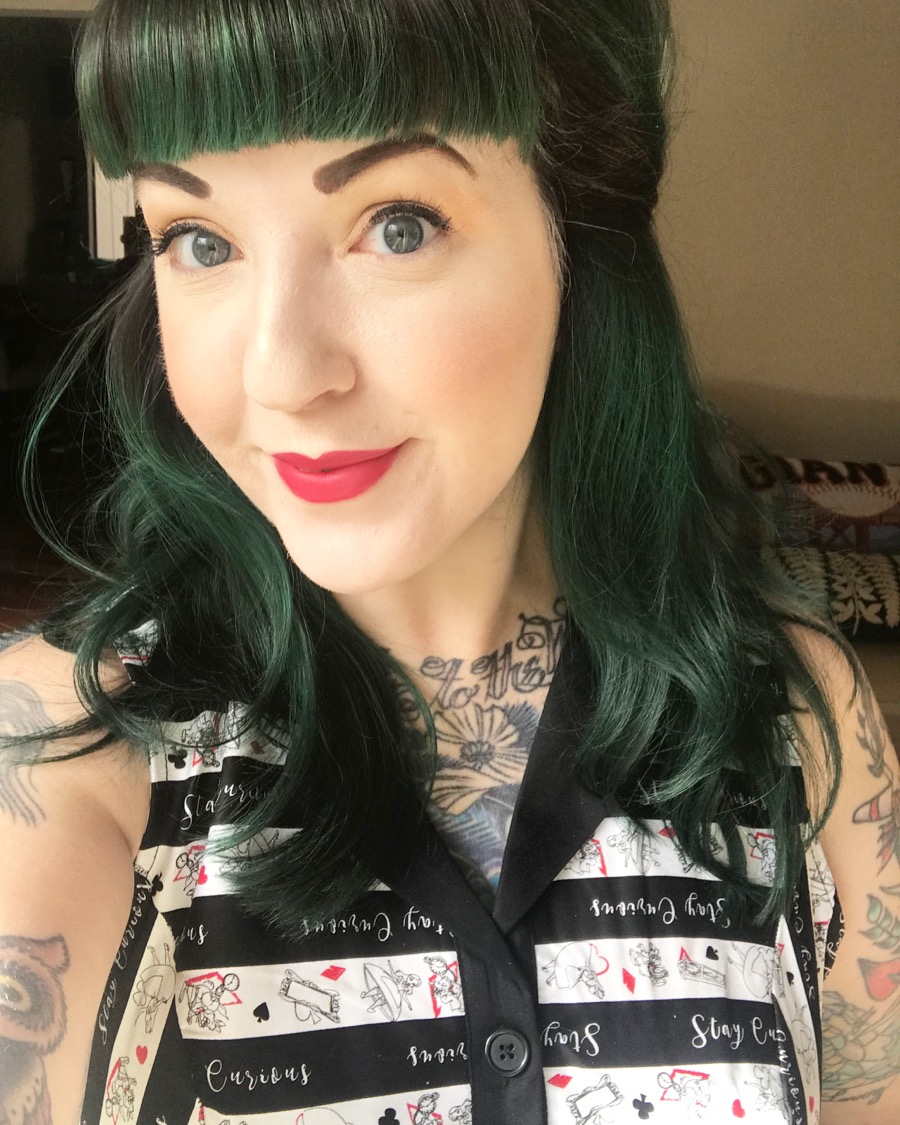The story of Jill
My name is Jill, I am 34 years old, and by the looks of me most of the time, I am a normal green haired, tattooed mega nerd from Northern California. I can often be found wearing bright, bold clothes, and have a broad smile on my face. It’s easy to miss that I am very unwell, and some days that I am an ambulatory wheelchair user. I have a very rare, life threatening blood disorder called Hereditary Angioedema or HAE. Unfortunately of the three types of HAE, I have the rarest, and least medically understood type known as C1-INH-Normal, or for short, Type 3. Type 3 is in such small population they do not know our numbers, Doctors and Researchers are still scratching their heads as to what our root cause is. It’s said 85% have Type 1, 15% have Type 2, and Type 3 is still that big question mark. In the Rare Disease patient world our Doctors often call us Zebras, mine call me a Unicorn.
Hereditary Angioedema occurs in about one in every 10,000 to one in every 50,000 people who have Type 1 or 2, unfortunately there aren’t any percentages yet for us Type 3 unicorns. Type 1 and 2 stem from a non functioning or malfunctioning blood protein called C1 inhibitor (C1-INH). Whereas Type 3 has normal functioning levels of C1-INH. So the search continues for the genetic root cause of Type 3. Though our blood test results are different, our symptoms are the same. HAE causes blood vessels to become leaky, and that causes fluid to leave the bloodstream and go into the surrounding tissues. This leads to massive, often excruciating swelling anywhere in the body, including in the airway which can be lethal. Rates of mortality have been as high as 1 in 3 as a result. While advancements push on, and new therapies come out, there is still no cure. HAE is as the name suggests, often hereditary and can be passed on to your children, with a 50% chance of inheritance. Some get lucky, and don’t inherit HAE, but unfortunately spontaneous cases with no family history happen as well.
The most common places for attacks to hit are the face, upper and lower limbs, abdomen/intestinal wall, genitals and the ever dreaded airway attack or laryngeal attack. HAE can be triggered by stress, exercise, dental work, hormones, cold/flus, prolonged use of hands, feet and other physical activities. Unfortunately HAE attacks can happen for no reason, without being triggered as well. Without any warning HAE can suddenly morph you into an unrecognizable version of yourself, hidden under the massive swelling you endure. The pain is excruciating and often indescribable, though I commonly say abdominal attacks feel as though I have swallowed hot lava, and broken glass coupled with symptoms that resemble the most horrendous food poisoning imaginable. I have heard others liken the pain to that of childbirth. Attacks can last days on end, and attack frequency varies from patient to patient, but can happen as often as several times a week. Upon looking at us during attacks most Doctors think we are experiencing some sort of massive, and aggressive allergic reaction, if only it was that simple. Because HAE is not histamine mediated, things like Benadryl or epinephrine do not stop our attacks. We need HAE specific medications, and sometimes human plasma infusions to stop the HAE train in its tracks. If the swelling happens too fast in your airway, you face intubation (tubes in your airway to keep you breathing) or an emergency tracheotomy to save your life. So as you can imagine, raising awareness especially within the medical profession, and first responder world is VITAL to our survival. Unfortunately too many have died as a result of being treated for anaphylaxis because the Doctors hadn’t heard of this very rare blood disorder HAE.
This year, at Christmas I unfortunately experienced a cluster of airway attacks, 4 within a 32 hour period, and 4 more in the days that followed that week. I promised myself amidst the darkest moments of those attacks, that if I made it through, I would again put my fingers to the keyboard to raise awareness on Rare Disease Day, and I wouldn’t hold back anything. Unfortunately having a rare disease isn’t always easy to speak up about. Your friends, and often family have no idea what this strange illness is, and most of your Doctors don’t either. You often suffer years undiagnosed, questioning yourself, wondering if it’s actually real, and you consider stopping searching for a root cause to your mystery illness out of sheer exhaustion. Patients with HAE go an average 9 years before being diagnosed, most undergo unnecessary surgery, and treatments for illnesses we were misdiagnosed with. My story is unfortunately one of them. When you finally find out what you have, you have an all new battle to face, and often little information readily available to help you understand. Rare Disease is so often not well understood, research can be minimal or non existent, no cures exist, and often medications don’t either, or they cost in upwards of millions of dollars a year. It is imperative that patients, caregivers and Rare Disease experienced Doctors speak out, because lives depend on it. I hope by raising awareness, and sharing my story it will inspire others to do so in their own way as well, because knowledge of Rare Disease has the not only the power to change lives, but also to save lives.
